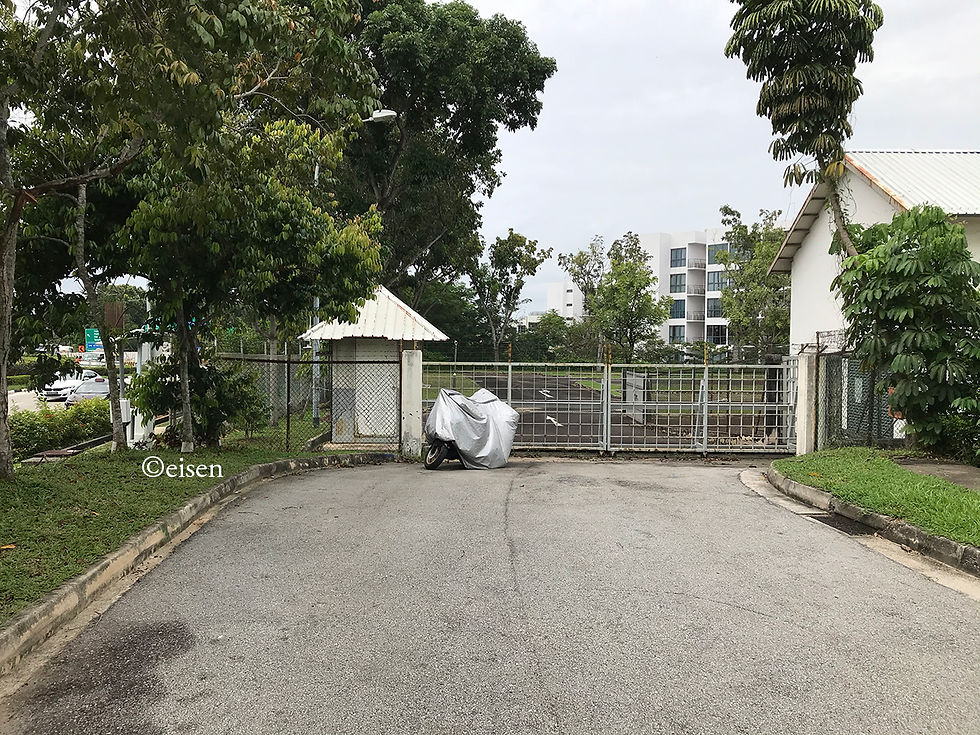Graveyard Road
- Eisen
- Jan 16, 2021
- 3 min read
Singapore used to be covered by cemeteries. No thanks to urban renewal and redevelopment in a land-scarce, overcrowded city-state, most of these cemeteries have disappeared, but it’s fitting that we still have roads and places named after “Cemetery” in multiple languages.
For our national language Malay, there’s Jalan Kubor, or “Grave Road”, in Kampong Glam. The cemetery there predates the arrival of the British in 1819.

For Hokkien, there’s Tiong Bahru in the south. “Tiong” is Hokkien for “Cemetery”; “Bahru” is Malay for “New”. Numerous Chinese cemeteries there have been exhumed.
For English, many roads in Choa Chu Kang Cemetery - the only cemetery in Singapore currently open to burials - have “Cemetery” in them. For example, Christian Cemetery Path 11, Muslim Cemetery Path 4, and Hindu Cemetery Path 1.

And as for Tamil, there’s Jalan Mayaanam, or “Graveyard Road”, a tiny road of around 140 metres, off Upper Changi Road North.

I recently visited Jalan Mayaanam. Heading down Upper Changi Road North, blink and you’ll miss it. It’s a narrow, single-lane dual carriageway, with hardly any lane markings. It seems to serve only two functions: An alternative exit for vehicles from the Salvation Army’s Peacehaven Nursing Home and the Japanese School, and free parking space for heavy vehicles. Next to the road is Exit 1 of the Tampines Expressway, which sees a continuous flow of traffic.





Jalan Mayaanam used to be far longer, running from the old Upper Changi Road to the now-defunct Tampines Road.

In the 1980s, the road was sliced in half by the northward extension of Upper Changi Road East to Tampines Road; the extension was later incorporated into Tampines Expressway.
Most of the rest of the road was subsequently expunged, saved for the fragment which still exists today.
If the expressway had been planned several metres to the right, Jalan Mayaanam would not exist today.

The road got its name from the Hindu cemetery which used to exist to its east.
In 1982, The Straits Times described the cemetery as thus:
All the bodies, except for a few, are buried along one edge of the cemetery. There is an open hut 7 metres by 5 metres next to the entrance where the rituals before a burial take place.
There are two large 60-year-old trees, giving shade, ostensibly. They stand like sentinels, whispering to each other when the wind blows. A coconut tree, with its top sliced off by lightning, stands like an accusing finger. The white frangipani adds an unearthly fragrance to the atmosphere - an atmosphere of timelessness, for time has stopped for those who are here. The other half of the cemetery is a wide, open space of green grass, which gently dips towards one length of the boundary. From this half, the view is enchanting: a creamy blue sky forming a canopy over the luxurious green tops of trees.
The visitors come here to worship and worry. It is here that they feel hope and fear, grief and guilt, love and loath, all at once. It is simple yet stark; serene and yet uneasy. It is the place of eternal sleep. It is The Destination.

Sadly, by the 1990s, the cemetery was exhumed; condominiums stand on the site today. As for Graveyard Road, it is largely forgotten, known only to the drivers of heavy vehicles who wish for free parking.

Comments